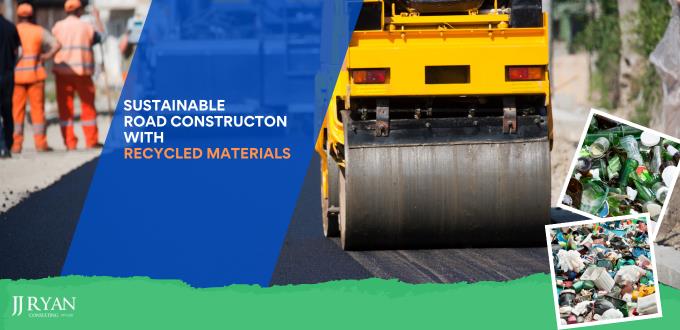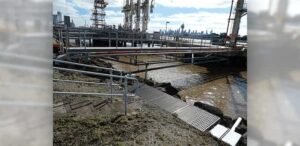In recent years, sustainable practices have become a crucial part of civil engineering and construction projects worldwide. In Australia, the use of recycled materials in road construction is not only an innovative approach but also a necessity to address environmental concerns and resource limitations. This blog post aims to educate our clients about the benefits, methods, and successful applications of recycled materials in sustainable road construction, aligning with our commitment to providing eco-friendly and cost-effective solutions.
The Importance of Sustainability in Road Construction
Australia’s road network is extensive, covering urban, regional, and remote areas. Maintaining and expanding this network traditionally involves significant consumption of natural resources and energy, leading to a considerable environmental impact. By incorporating recycled materials into road construction, we can achieve several key benefits:
- Reduction in Environmental Impact: Using recycled materials helps conserve natural resources and reduces the need for quarrying and mining activities, which can have detrimental effects on the environment.
- Waste Management: It provides a valuable outlet for various waste products such as demolition waste, rubber tyres, and glass, reducing the burden on landfills.
- Cost Efficiency: Recycled materials can often be sourced at a lower cost than virgin materials, leading to significant savings in construction budgets.
- Energy Conservation: The production of recycled materials typically requires less energy compared to the extraction and processing of new raw materials.
Types of Recycled Materials Used in Road Construction
Several recycled materials have proven to be effective for use in road construction. Each type offers unique properties that can enhance the performance and sustainability of road infrastructure.
- Recycled Asphalt Pavement (RAP):
- Usage: RAP is produced by milling existing asphalt pavements and can be reused in new asphalt mixes.
- Benefits: Incorporating RAP can reduce the need for new asphalt, decrease greenhouse gas emissions, and lower construction costs.
- Crushed Concrete Aggregate (CCA):
- Usage: Derived from demolished concrete structures, CCA can be used as a base layer for roads or as an aggregate in new concrete.
- Benefits: CCA offers a strong and long-lasting material, decreasing the need for new aggregates and promoting the reuse of construction waste.
- Recycled Glass:
- Usage: Ground into a fine powder or used as an aggregate, recycled glass can be incorporated into asphalt mixes or concrete.
- Benefits: It improves the durability and skid resistance of pavements while offering a sustainable use for glass waste.
- Rubber Tyres:
- Usage: Shredded or ground rubber derived from discarded tyres can be incorporated into asphalt mixtures to produce rubberised asphalt.
- Benefits: Rubberised asphalt enhances the flexibility and longevity of pavements, reducing maintenance needs and repurposing tyre waste.
- Plastic Waste:
- Usage: Processed plastic waste can be incorporated into asphalt mixes or utilised in the production of plastic-based composite materials for road construction.
- Benefits: The utilisation of plastic waste in road construction helps mitigate the escalating problem of plastic pollution while enhancing the performance of pavements.
Methods of Incorporating Recycled Materials
The incorporation of recycled materials into road construction can be achieved through various methods, each suited to different project requirements and material types.
- Hot Mix Asphalt (HMA):
- Description: HMA involves heating aggregates and asphalt binder to create a cohesive mixture. Recycled materials like RAP, rubber, or glass can be added during this process.
- Advantages: This method ensures a uniform distribution of recycled materials and maintains the performance characteristics of the pavement.
- Cold In-Place Recycling (CIR):
- Description: CIR is a method where the existing asphalt pavement is milled, mixed with additives, and laid back down without the need for heating.
- Advantages: CIR is energy-efficient, reduces material transportation costs, and is ideal for rehabilitating deteriorated roads.
- Foamed Asphalt:
- Description: Foamed asphalt uses water and air to expand the asphalt binder, which is then mixed with aggregates and recycled materials.
- Advantages: This technique enhances the workability and compaction of the mixture, making it suitable for including a diverse range of recycled materials.
- Warm Mix Asphalt (WMA):
- Description: WMA is manufactured at lower temperatures compared to traditional HMA, resulting in decreased energy consumption and emissions.
- Advantages: It enables increased proportions of RAP and other recycled materials while preserving the integrity and performance of the mixture.
Case Studies and Success Stories
Several projects in Australia have successfully utilised recycled materials in road construction, demonstrating the feasibility and benefits of these practices.
- Hume Highway:
- Project: The Hume Highway upgrade incorporated RAP and recycled concrete in the base and subbase layers.
- Outcome: The project achieved cost savings, reduced environmental impact, and enhanced pavement performance.
- Sydney Airport:
- Project: The resurfacing of Sydney Airport’s runways included rubberised asphalt made from recycled tyres.
- Outcome: The use of rubberised asphalt enhanced the durability and flexibility of the runway, reducing maintenance needs and repurposing tyre waste.
- City of Melbourne:
- Project: Urban road projects in Melbourne have incorporated recycled glass into their asphalt mixes.
- Outcome: The integration of recycled glass improved skid resistance and provided a sustainable solution for glass waste.
- City of Ballarat:
- Project: The City of Ballarat used recycled asphalt from an existing road within the municipality for road improvements at a different location.
- Outcome: The use of recycled asphalt promoted sustainable practices while also cutting costs.
Challenges and Considerations
While the use of recycled materials in road construction offers numerous benefits, several challenges and considerations must be addressed to ensure successful implementation:
- Quality Control: Ensuring the quality and consistency of recycled materials is crucial for maintaining the performance and longevity of the pavement.
- Regulatory Compliance: Adhering to Australian standards and regulations for road construction when integrating recycled materials is imperative.
- Public Perception: It is essential to inform stakeholders and the public about the advantages and safety of using recycled materials to garner acceptance and support.
- Technical Limitations: Understanding the technical limitations and suitability of various recycled materials for specific applications is vital to maximise their utilisation.
Future Prospects
The future of sustainable road construction in Australia looks promising, with ongoing research and technological advancements paving the way for increased use of recycled materials. Key areas of development include.
- Innovative Recycling Technologies: Advances in recycling technologies are enabling the processing of a wider range of waste materials for use in road construction.
- Improved Material Performance: Research into the performance attributes of recycled materials is resulting in improved durability and extended lifespan of pavements.
- Policy Support: Government policies and incentives promoting sustainable construction practices are encouraging the adoption of recycled materials in road projects.
Conclusion
The use of recycled materials in sustainable road construction is a vital step towards reducing environmental impact, conserving resources, and managing waste effectively. By embracing recycled materials, we not only contribute to a greener future but also enhance the resilience and sustainability of Australia’s road network.














